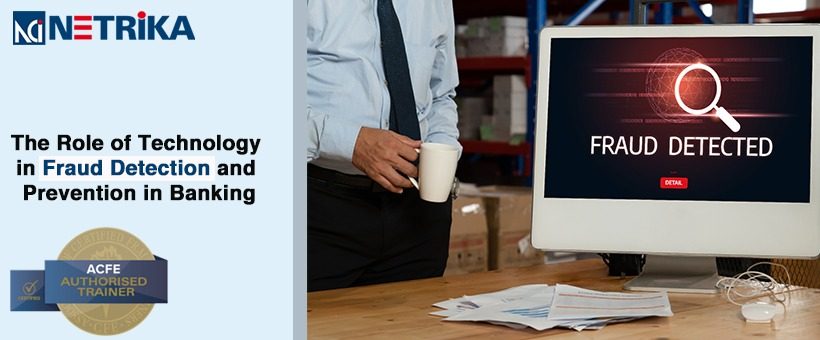News & Events
The Role of Technology in Fraud Detection and Prevention in Banking
- July 2, 2024
- Posted by: marketing@netrika.com
- Category: Blogs

Certified fraud examiners (CFEs) are trained to leverage the latest technological advancements and best practices to enable a robust fraud detection and prevention strategy. In the digitally evolving age, when threats have become a norm, and are associated with the most sophisticated frameworks penetrating an organization’s system or network to exploit its assets, infrastructure, financial standing, and reputation, the need for using technology to design anti-fraud strategies cannot be overstated. Technology plays a crucial role in proactively identifying and containing risks, as well as determining the threat extent and impact to make the organization resilient. Read more.
For instance, combining data analytics and artificial intelligence is a ground-breaking method for detecting fraud in across industry verticals. Using this cutting-edge method, certified fraud examiners can spot trends in fraudulent behavior, possible industry threats, and irregularities that could compromise bank integrity. This involves the technological evolution of pattern recognition, predictive analysis, and anomaly detection. Furthermore, the use of real-time data can help in proactively taking corrective action and mitigating fraudulent transactions before they damage the organization’s reputation.
Behavioral analysis is one of the evolving technologies that encompasses the process of identifying warning signs or suspicious activity from both internal and external operations that could harm a bank’s financial reputation. It is based on the application of tools like fingerprint or biometric analysis. This lessens threats to the bank’s financial integrity and aids in the early detection and prevention of fraud by a trained fraud examiner. Common methods devised under biometric tools include multi-factor authentication and continuous authentication to ensure only a legitimate user has access to company assets.
Additionally, forensic science as part of fraud detection and prevention enables certified fraud examiners to examine financial documents, identify discrepancies, and follow them up for review.
Moreover, technologies such as data mining, and customer profiling also fall under the fraud detection and prevention best practices that can identify hidden patterns indicative of fraud and create detailed customer profiles to detect abnormal behavior.
In addition to this, applying blockchain technology as part of fraud detection and prevention ensures a decentralized ledger that is immune to malicious attempts and ensures the security and transparency of financial transactions. It encompasses the elements of secure transactions and smart controls that enable a tamper-proof cryptographic transaction and coded self-executing contracts that can automate and enforce regulatory compliance to reduce the possibility of illegal contract modifications.

